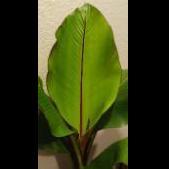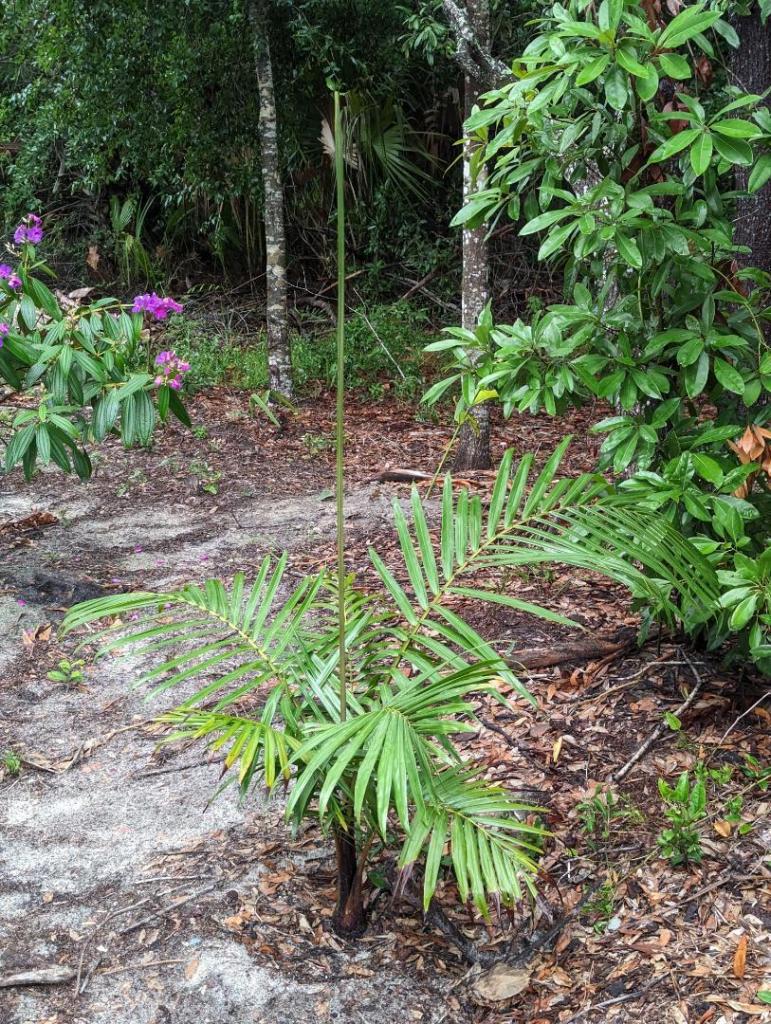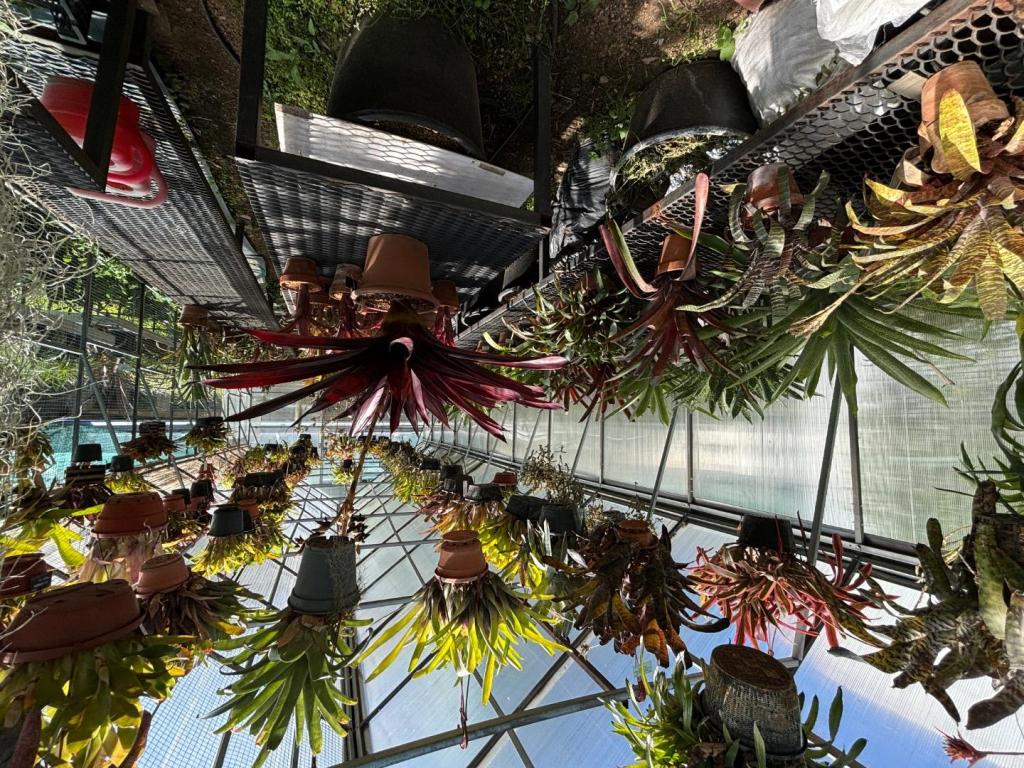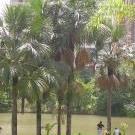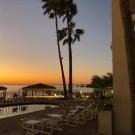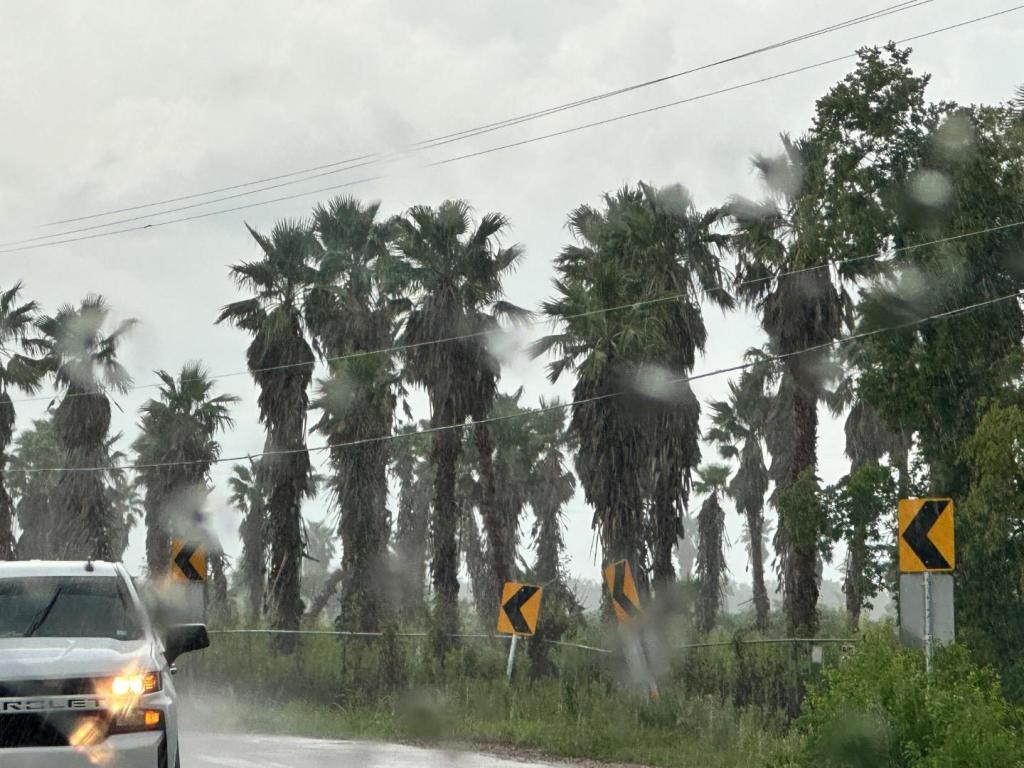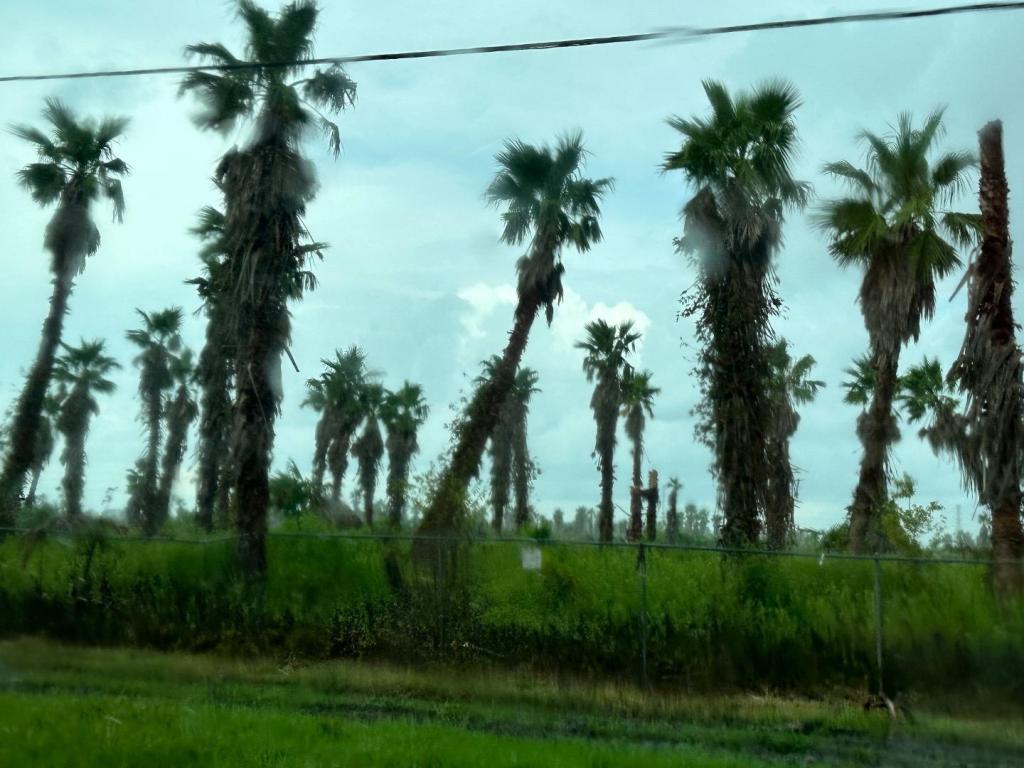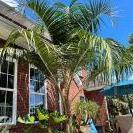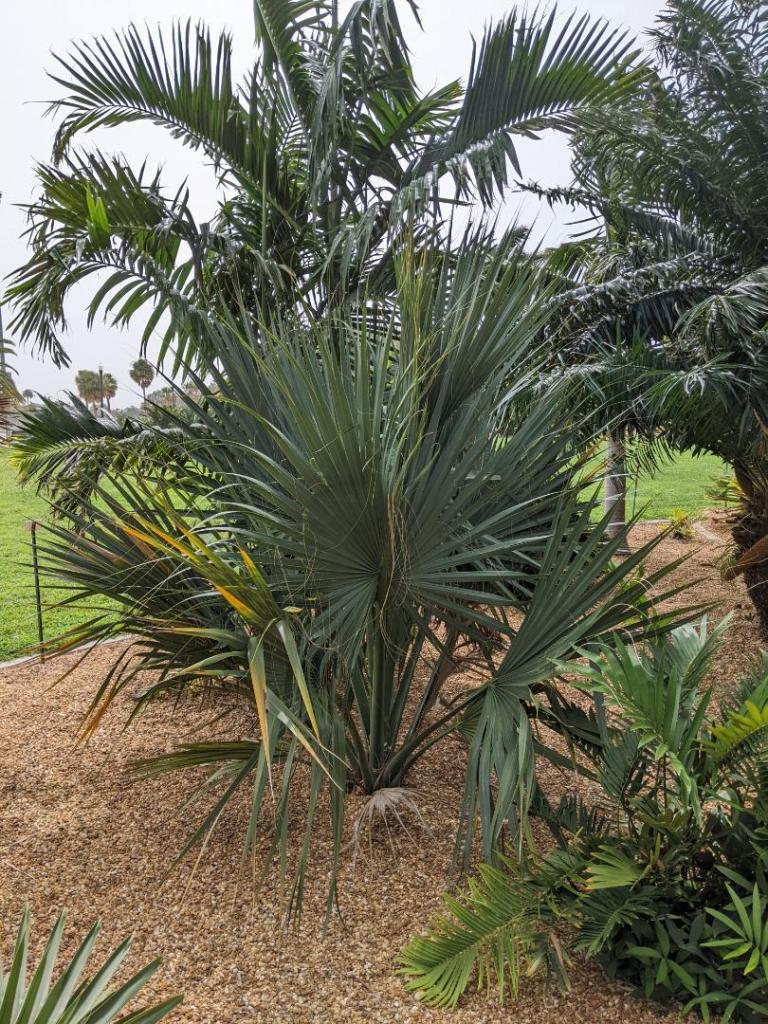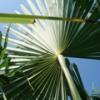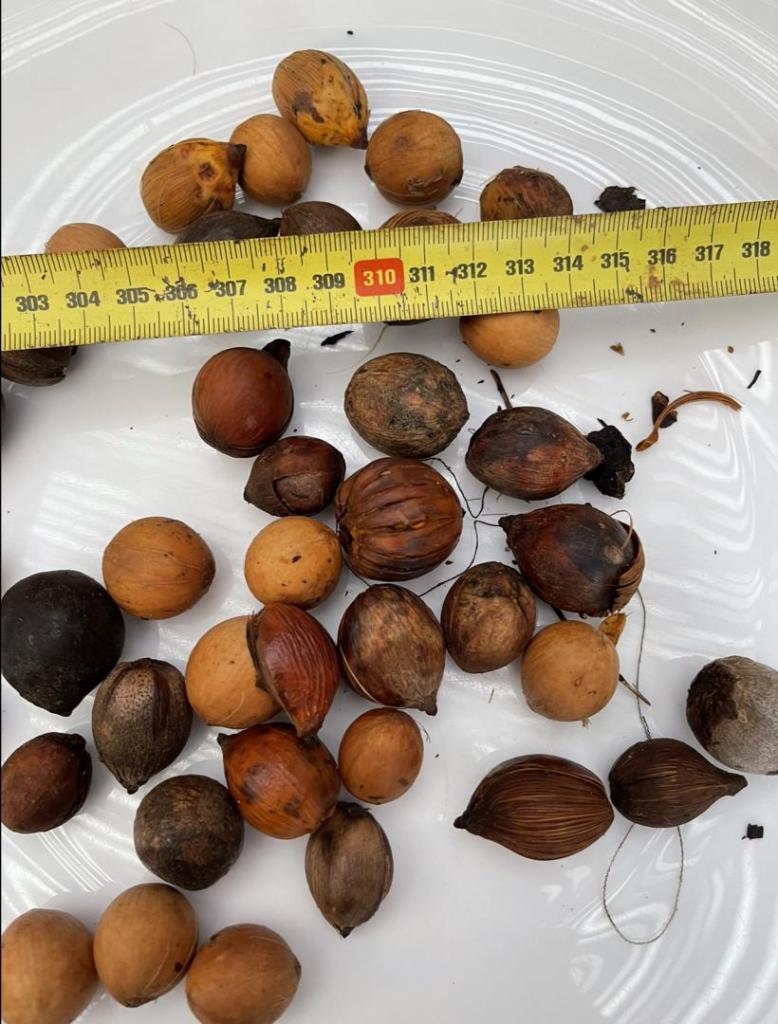Leaderboard
Popular Content
Showing content with the highest reputation on 07/17/2024 in all areas
-
9 points
-
As summer and the heat arrived to Hungary I will post some pictures of my garden 😁 Palms and plants that I have planted outside: Phoenix canariensis Phoenix Sylvestris Butia Capitata Brahea Armata Sabal Palmetto Trachycarpus fortunei Trachycarpus fortunei x takil Chamaerops humilis Syagrus Romanzoffiana Rhapis excelsa Washingtonia Filifera Cyathea Australis Dicksonia Antarctica Cycas Revoluta (and another type of cycas which I have no idea how is it called) Lots of type of yuccas, agaves, alocasias, colocasias and others 🙂7 points
-
5 points
-
5 points
-
4 points
-
A common fruit here in Hawai’i, known as Ohi’a ‘ai, blooms and fruits abundantly once a year. A beautiful scarlet fruit with the shape and crunch of a pear and is mildly sweet. To me its subtle taste has a rose water flavor. It flowers and fruits from the stems and branches well hidden within the dense leafy mid sized tree. The skin is very thin and they bruise easily, lasting only a few days when ripe. Here are a few photos. Tim4 points
-
4 points
-
Okay, so, up on my experienced (geriatric?) soapbox I go. How do I love queen palms? And how do I or others hate them. Oh the many ways relating to their being and biology. Here in Southern California Queens rock, our climate is a lot like their native land in Sou-ha'merica, Argentina, Paraguay, southern Brazil. If you have soil that's actual ag dirt, and not alkalai-hell dirt, they just grow like hell. Deep green. Fat, happy. thirty feet in like 7 years. Thick and tough enough to stop monster trucks and yeah, I've seen a number that did. Full sun, the fuller the better, but will take half a day. 18 inches across the trunks, and the trunks are full of fibers not water. These ain't no candy-assed Roystonea trunks. They use these for pilings in the sea, and "shipworms" don't mess with them. Fibers woven with other fibers, not just "bark" and sponge underneath. The roots are greedy. (Slapping self to stop editorials.) Weeds and other plants don't like growing beneath them. Good places for gravel/chips etc. for mulch. The original street view for google maps of my place shows a bunch of queen palms, the year before I had another dude remove them for his palm ranch in Corona. (Tried to get him into other palms, but he said no.) Still do my best for the volunteer babies. People who want them are glad when I plant them for them, and encourage them to come explore other options. But, queens rock. Bay-bay, yes they do. To be continued.4 points
-
4 points
-
A couple of quick photos from Google Maps (Feb. 2024). Lakeland City Hall: Has added some trunk and frond width since this photo 5 months ago. Barnett Park: Those who went on the summer CFPACS tour remember this one. It looks a LOT better than in this photo now and was impressive during the tour. Lake Wire: They pruned this instead of letting it self-clean. It's a relatively recent addition. I'll get some better photos of these next time I'm downtown. Mine is growing well, but still a little smaller than these since I bought it small.4 points
-
That’s an awfully big category since there approximately 1,000 different species of fan palms. Were you referring to any particular species of fan palm?4 points
-
4 points
-
4 points
-
Absolutely one of my most favourite palms I just love chamaedorea palms especially the adscedans var something about that variety that just sums up a small palm in perfection it may be the one that challenges my cultivation every season pollinating them it’s so satisfying having a single female plant that’s isolated and producing seed on it they just grow so well in my climate I attribute that to the black sandy soil it seem to be what they want whatever it is there special to me.3 points
-
3 points
-
Royals grow fine here, if you water them. That's the big limiting factor.3 points
-
2 points
-
Every time I visit our chocolate farm in El Salvador, I try to take seedlings with me to plant there. I also have sourced non-palm plants locally (Couroupita guianensis, Delonix regia, a number of different Handroanthus, Ceiba, Mahogany...but the selection of palms locally is pretty slim. We are in the process of planning a new home construction (and the rest of the acreage is cultivated) so I don't have a lot of confidence with planting much yet - I don't want to end up having things ripped out or damaged when it comes time to build - but I have planted a couple of things over the last few years which seem to be doing ok with no irrigation. The dry season here can be brutal. I hope to start brining in some really exotic species once the house is built and we have irrigation in place. This is a really wonderful property and I have a lot of space to play around with. 20240703_052837.mp4 This is some of our heirloom cacao. Tested by USDA and confirmed criollo (of the 10 or so identified genotypes, criollo is the least common but occurs naturally in Central America. We found this particular variety growing wild in a nearby canyon and have cloned a whole lot with it. I like the maroon color on the new flush. First are these kerriodoxa - I planted two and both are going great! they are under a giant Ficus inspida (I believe). Then we have a duo of Chrysalidocarpus leptocheilos. Really excited about his one, as I have not seen these here anywhere. This, I believe, is Livistona saribus A bismarckia nobilis And a few Ravenala as well.2 points
-
???? I can understand someone saying that Washingtonia robusta is synonymous with Southern California, but being a second generation native, I hardly think of Syagrus romanzoffiana as an iconic representation of Southern California, They didn't really burst onto the scene in the suburban sprawl until maybe 40 years ago. Washingtonia robusta's date back at least a century as street plantings in California and common yard plantings. My first home in the late 80's I opted for a couple of Rhopalostylis sapida rather than Queens even though at that time only a few people were planting Queens in my new Carlsbad subdivision... so much more elegant a palm are those Shaving brush palms. It wasn't until the 90's that every other lot being developed in southwest Carlsbad had a mix of Queens, Pygmy date palms and maybe a Sago "palm" or two (Cycas rovoluta). At about that time we said goodbye to all the regional hardware chains and shortly thereafter many of the regional nursery chains and Home Depot moved in. They were followed by Home Base, which later was acquired by Eagle Hardware and then gobbled up by Lowes, where most of these palms are now sold. Not to mention the many independent nurseries that have closed over the decades that had more eclectic buyers than the chains can claim. Perhaps that's why I don't want my yard to look like a Home Depot parking lot in the way of plantings. I miss Sackett and Peters, Builders Emporium, Stallings Ranch Nursery, my local Ace Hardwares where the owners were often behind the cash register. I don't miss not planting Queen palms that go with the new mass merchandise nationwide chain retailers.2 points
-
Two years ago I planted a few two inch Java Blue Bananas. It doesn’t take long. First bunch harvested, A few more immature bunches on the plant. This bunch started forming before winter, saw a number of frosts which burned back the leaves, but the bunch kept growing which may account for the smaller sized fruits. Vallejo, Northern California, 9b. 🍌2 points
-
Thoroughly amend your clay, and it's about the best soil you can have. The only thing that's better is river bottom silt or dirt with gold nuggets or diamonds in it.2 points
-
It sounds crazy but I like how the trunks look stunted/bonsai even when planted out in the landscape.2 points
-
2 points
-
It is possible to grow palms long term in containers it just take a long time obviously but repotting into the next size container that may take 5 years or more the Kerriodoxa is 22 plus years old in the photos they sort of become bonsai if I was to plant it in the ground it would take a couple of years to start to get a move on most likely sulking for the first year Howea fosteriana will live in containers pretty well much indefinitely small patio palms may never be planted living there entire life in a container it comes down to how good a grower you are knowing your soil fertiliser and watering schedule once you learn it bingo it’s easy to keep a plant pretty well much indefinitely.2 points
-
They do rock! They are Southern California icons. It's an image. A way of life. The Queens ooze the Southern California lifestyle decades in the making. Awe inspiring feathery pinnate ornamental elegance. Mine are growing in clay and super happy with the nutrient rich soil. But I am still amazed things grow in this clay. If I don't water frequently enough during our dry season the clay dries into concrete and it becones water impervious. It takes time to get the water to penetrate once again. Yet they still flourush. They know they are in the land of So Cal. Queens forever!!2 points
-
Hmmm. Okay, in my time I've loved queens. Palms that is. When I came here in 1985 I wanted to get a house and get some palms, and in 1986 I did, in Highland, right next Norton AFB. Closed escrow on Sept 2 and bought a bunch of five gallon queens on Sept 3 planted them shortly after, I was a happy young dude planting his first palm trees. And, some are still there after nearly forty years. Sold the house, went to college at UCR, lived up hill from the campus and OF COURSE I planted a few queens there, too in 1990-1991. They're still there. Landlord approved, I moved, he died, new owners like the palms apparently. In law school, I discovered the palm society, and the downward or upward spiral began. Palm snobbery set in. I raised palms in a home container ranch and sold them for cash to whoever wanted them, and it was gratifying to see how many did.2 points
-
Just my take, but I think they always look their best; a magnificent palm.2 points
-
I wouldn't have thought that, but since you pointed it out -- yeah, very-short-to-no petiole, much like A. catechu dwarf. However, comparing the two side-by-side, you would never mistake one for the other. Not the extreme recurve nor overall breadth of the frond of a dwarf A. catechu, and of course the thin trunk and red crownshaft are dead giveaways for A. macrocalyx. But hey, they are both Areca genus, so, yeah, but no.2 points
-
2 points
-
Here's my example of a pygmy date palm that I grew from seed I started 27 years ago. Not exactly 'pygmy' size anymore, but it has taken everything that the Arizona desert has thrown at it in stride. 120F + temps in the summer,23F on its coldest winter days over the years. It is planted on a western exposure and receives full sun from about 11am on. Always looks good,even with minimal water,as I only water it about once a week by hand,and that's if I remember... There are tens of thousands of pygmy dates already planted across Arizona, so those sheer numbers alone prove that it is an acceptable species for the average homeowner to grow here successfully. aztropic Mesa, Arizona2 points
-
I'm 81 now and was in great shape until March when I came down w/shngles. Yea I got the shots and still got it. Then as that was clearing up something swelled up below and to the right of my belly botton. After an Ultra Sound, a CT scan and a MRI my Dr's said they don't know what it is but it's not a hernia or any cancer. Pain is gone now but still swollen enough that bending over to put on socks or shoes is uncomfortable. As they say getting old is a bitch but it beats the alternative. LOL Anyway back to palms....I can finally use my weed wacker for the first time in 3 1/2 month. Spent about 3 hours w/a lunch break clearing the "back 40" which is a triangle of land about maybe 2000 sq feet... Some day I'm gonna measure it. LOL. It's the are labled Plumeria Patch. None there now but 40 years ago I was selling the flowers until I realized it was a twice a day job 7 days a week so I quit doing that. That long straight boundary is 700' long. Oh yea it' 2 acres. Here are two photo's before and after. I'll add some of the palms up there. Not to many planted way back there. This is in the lower portion of the "patch" looking at the long straight white line.2 points
-
2 points
-
That photos is in zone 13a. But yes if I was zone 10a such as Mediterranean Spain for example I would have other species like royals and foxtails, but at least one queen palm. Zone 10a in the UK I doubt can grow royals because the temps are too cool for too long, even if the winters are mild without freezing temps. Even in London I only have two queens in the ground and I have loads of species including, archontophoenix species, chamaedoreas, Chambeyronias, phoenixs, Jubaeopsis, chrysalidocarpuss, washingtonia, sabals, butias,, allagoptera, acoeloraphe, arenga,brahea, livistona ect ect. Pretty much any species that can handle cool periods. I wouldn't have only queens but a few are nice.2 points
-
2 points
-
Hi. The update is that we have taken guidance from the Kew team (Dr Dransfield in the UK and Dr Rakotoarinivo in Madagascar) and are preparing the paperwork for botanical samples to be collected and exported, to allow for proper identification. The process is being delayed because although the collection permit is written and signed, the person who should hand it to us is on a mission in the bush. Without the paperwork, Kew can’t export the material to the UK for genetic analysis so we are being patient and putting our ducks in a row before we do anything. I’m hoping we can ship the samples to Antananarivo this week.2 points
-
2 points
-
More plantings of the group have been done recently. First Chrysalidocarpus baronii in the shade in the front. Im hoping the spot gets cool breezes in summer and shade much of the year to keep it cooler. Next is the teddy bear (Chrysalidocarpus leptocheilos). This one i had trouble picking a spot i liked with the right amount of sun and ease of access for watering (another issue im having that will be rectified soon i hope). Third is Chrysalidocarpus basilongus, the wild card i'm not too sure on cold tolerance. Since it is smaller too it gets a spot closer to the house that i will see daily (while i watch for the bubblegum pink to appear again). Fourth is Chrysalidocarpus saintlucei, about ten feet away from the basilongus and a but higher for drainage. It was pushing itself out of the pot by the roots so now it can reach for the groundwater. Last is the Carpoxylon macrospermum in the same part of the brightly lit forest area. My hope is good light and some frost protection for them but i will cover them on cold nights anyway until i know how it works here. The one frost last year was not terrible and only really visible on the house and cars; plants had some but not a layer of it. All others have been fertilized and potted up as needed, way faster than i anticipated for some. The Arch. purpurea also has a tinge of color starting to show that is not visible in photos much yet. All around looking good, but palms planted in the ground all get shorter petioles and smaller leaves at least at first. Im hoping they grow out of it, but if not the Bentinkia will be moved back into a large pot unless the fall cool down changes things.1 point
-
Your method isn't far off from what a tree necrologist i studied under recommended for planting. We were in the dessert so the only difference was the level of planting had to be EXACTLY right. Too high and too dry, too low and suffocate the roots, so an inch above could be an issue. We used composted cotton burrs and a metal pipe on the hose end to work the soil into every air space and provide the extra help for establishment. IF we used block fertilizers we broke them up, but i never use them now just granular slow release. My sand i have now is another matter but i dont miss the hard digging (especially in caliché soil).1 point
-
1 point
-
They need water, the pygmy's dont have a problem with heat or sun if they get enough water. I agree that when you first plant them it is best in fall, but this time of year they may need water every other day for a couple months. Water more time for a deeper depth and just use a trickle hose or irrigation emitter. The one in the pic, grown in gilbert AZ got 2gph for 5 hrs overnight every 2-3 days in summer, less in winter of course. Don;t make the mistake of a high hose volume and lots of water, depth of wetting in soil depends on time, not flow volume. I might also spray them at the end of the day if its over 105F and dry. Once they develop a good root system, they will be fine. If you want to grow palms in arizona talk to those who have done it. Lookj up local palm talkers like AZtropic.1 point
-
Oh and sorry I note that I did not update about the samples. The local forestry office reneged on their initial ok for a collection permit, so we never did send samples of this to Joro at Kew in Antananarivo. I have a couple of living plants in my nursery in Fort Dauphin but I do not currently have the intention of going back to the collection site.1 point
-
I must admit , I know very little about this palm . I really like the look . Sadly they probably won’t grow here . Harry1 point
-
1 point
-
Very nice Bill! In the future you can try a trunk cut shortly after the freeze/spear-pull to get you started a little quicker. I did this successfully to 4 of my palms after February 2021 and @Allenposted on a similar experience with his palmetto. Check out the details in the posts since May 4.1 point
-
1 point
-
1 point
-
1 point
-
1 point
-
1 point
-
Thanks Tim. Yes. But it is not like the many mystery palms from Madagascar where someone collected a seed forever ago and forgot where it came from, or died with the knowledge. I know exactly where this palm lives. I chatted to the guy who carried it into town for sale because I had really thought it had become locally extinct. People used to carry them around for sale, all hacked out of the wild, and I do not know of one that ever survived. I asked the guy who was selling them yesterday and he told me there are a few left, but you have to go further to find them. Any expedition to check them out will need a fit person in charge of collecting specimens, it is literally right on top of a mountain. Anyway he was doing his sales pitch to me and I said I didn't want to buy it because for one, the trade in the plants is ruining the natural habitat and two, they always die. I tried to talk to him about how palms don't like to be ripped out of the ground like that and he assured me that this palm will grow, but, people over water them. He said, amin'ny ity lafa itiky, rano dia fady"... translated to "with this palm, water is forbidden". Anyway, I have sent the photos to Drs Dransfield and Beentje last night so perhaps one of the Kew people in Madagascar will collect a specimen one day.1 point



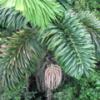






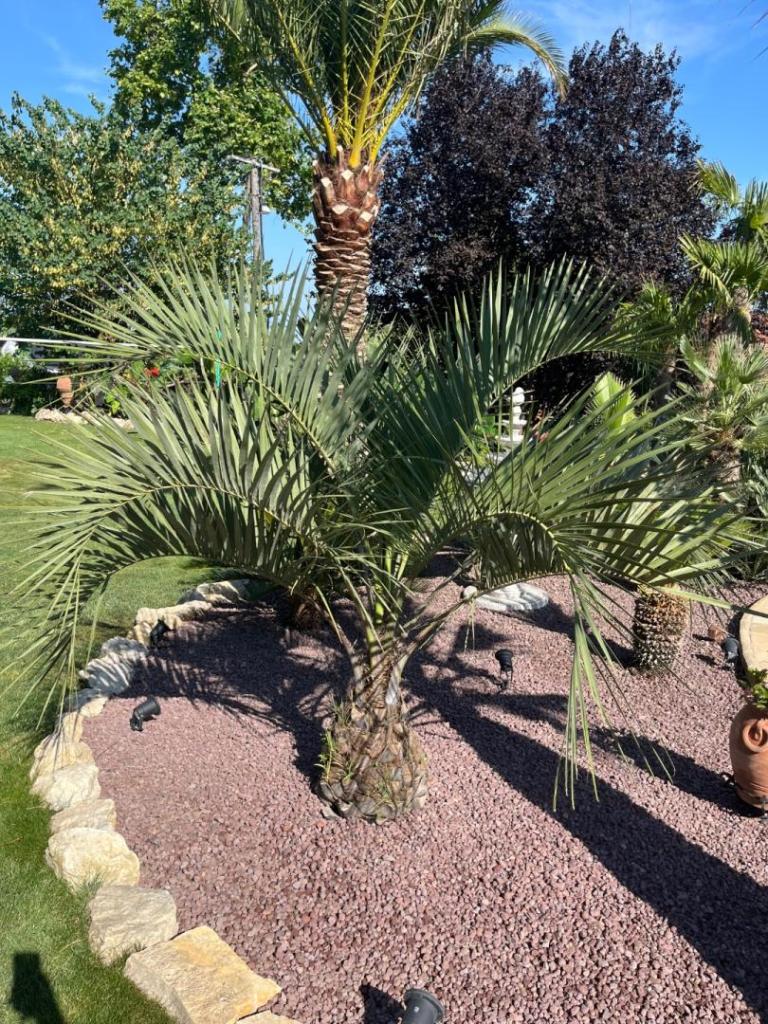




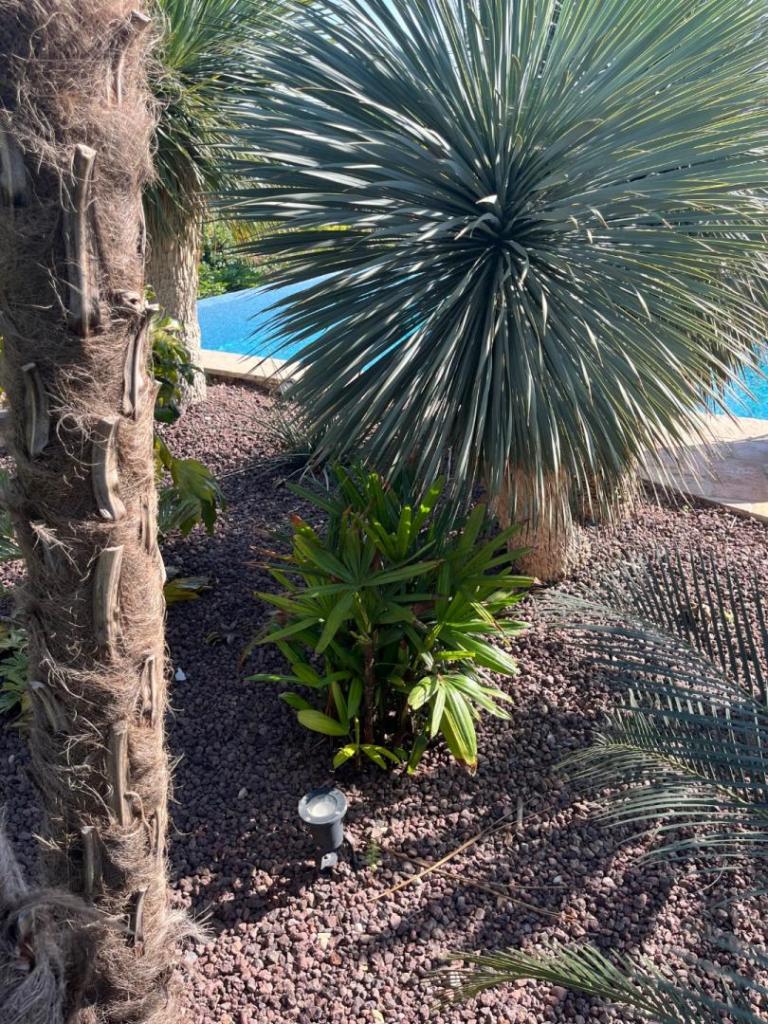

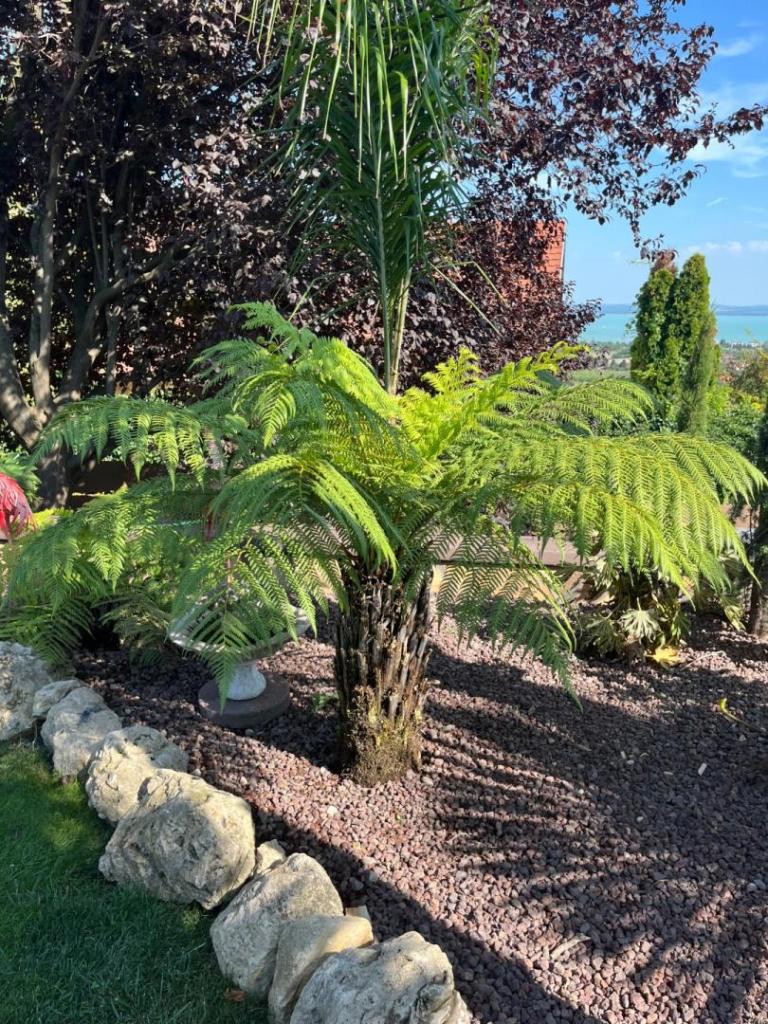

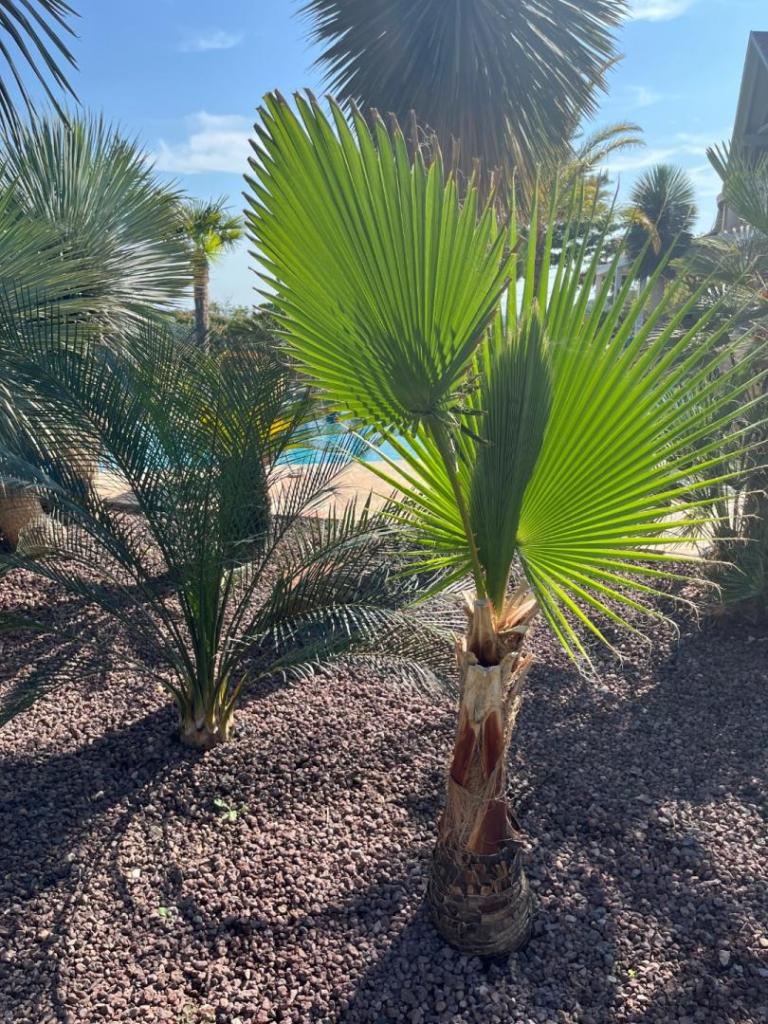
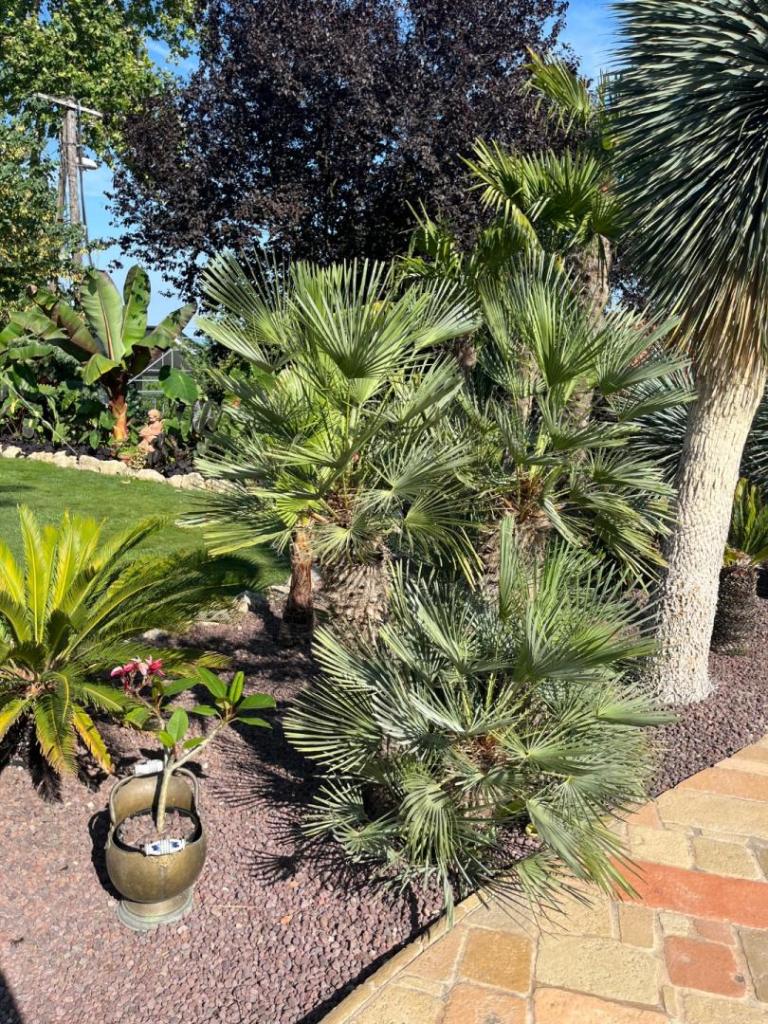








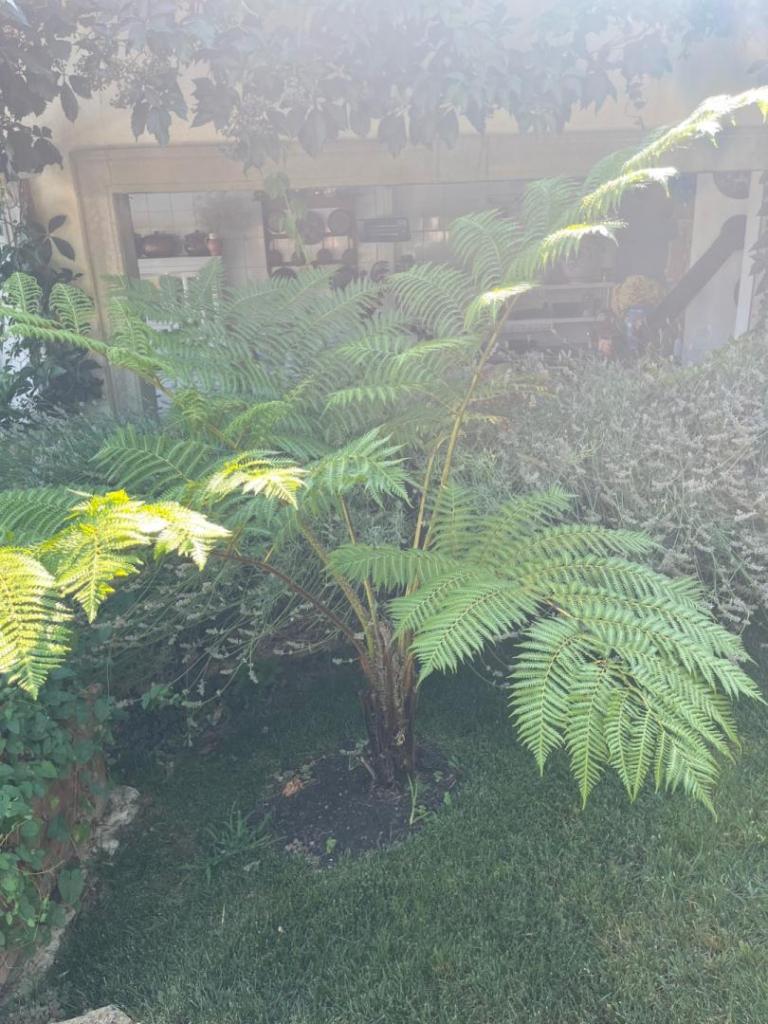




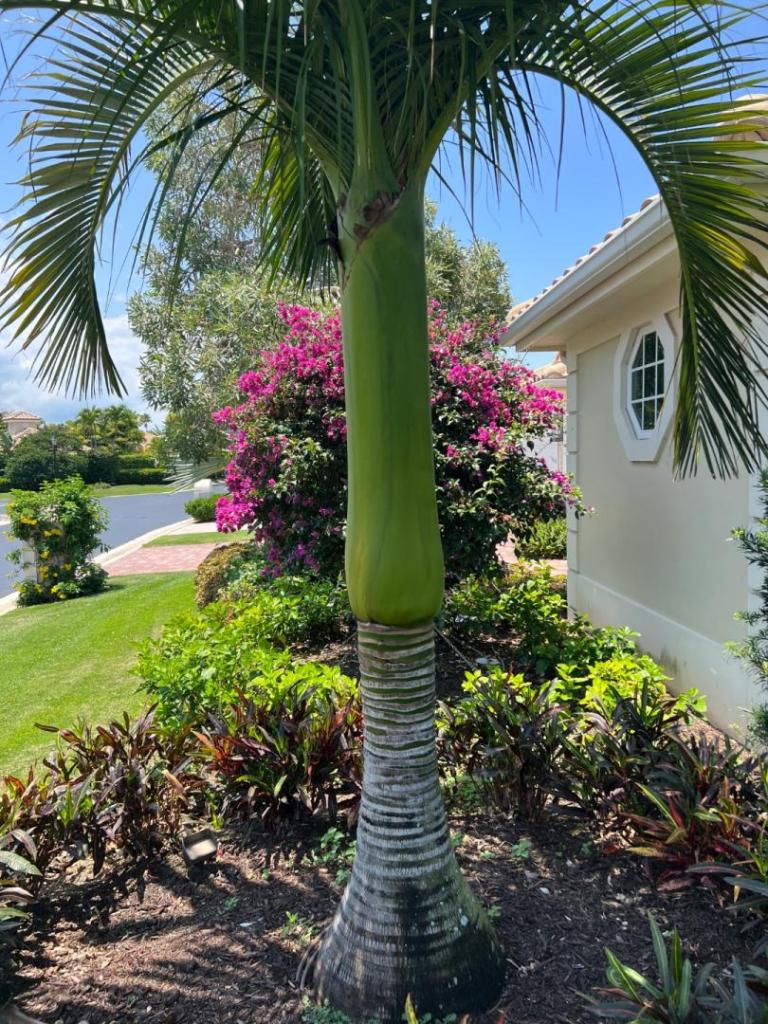
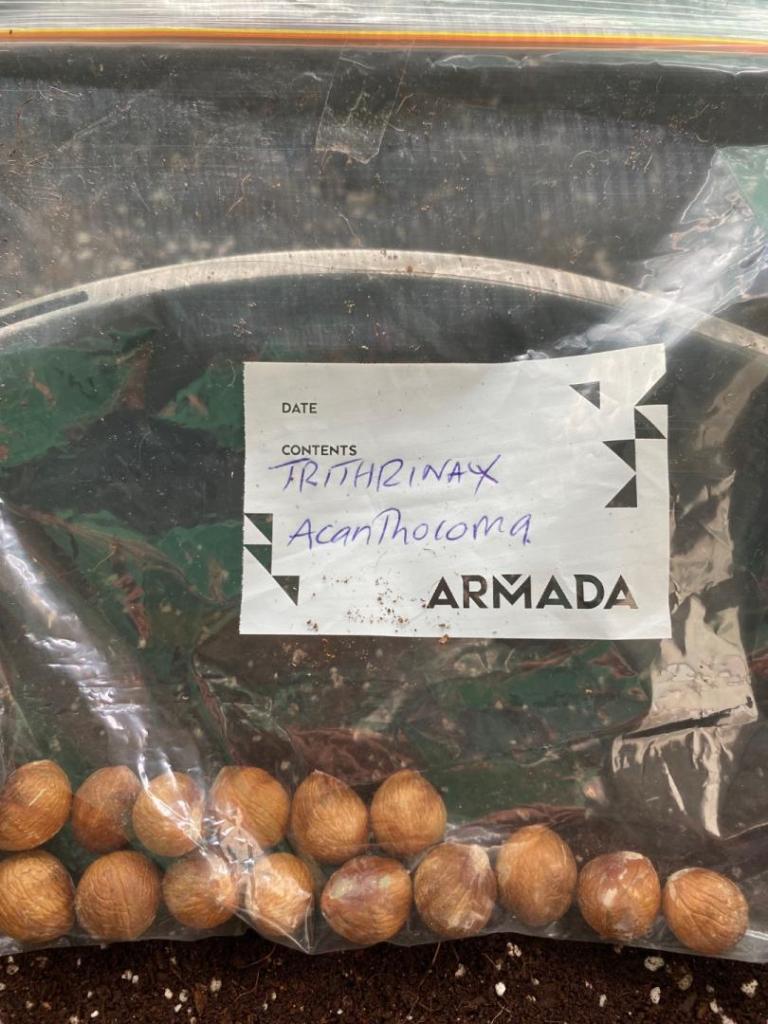
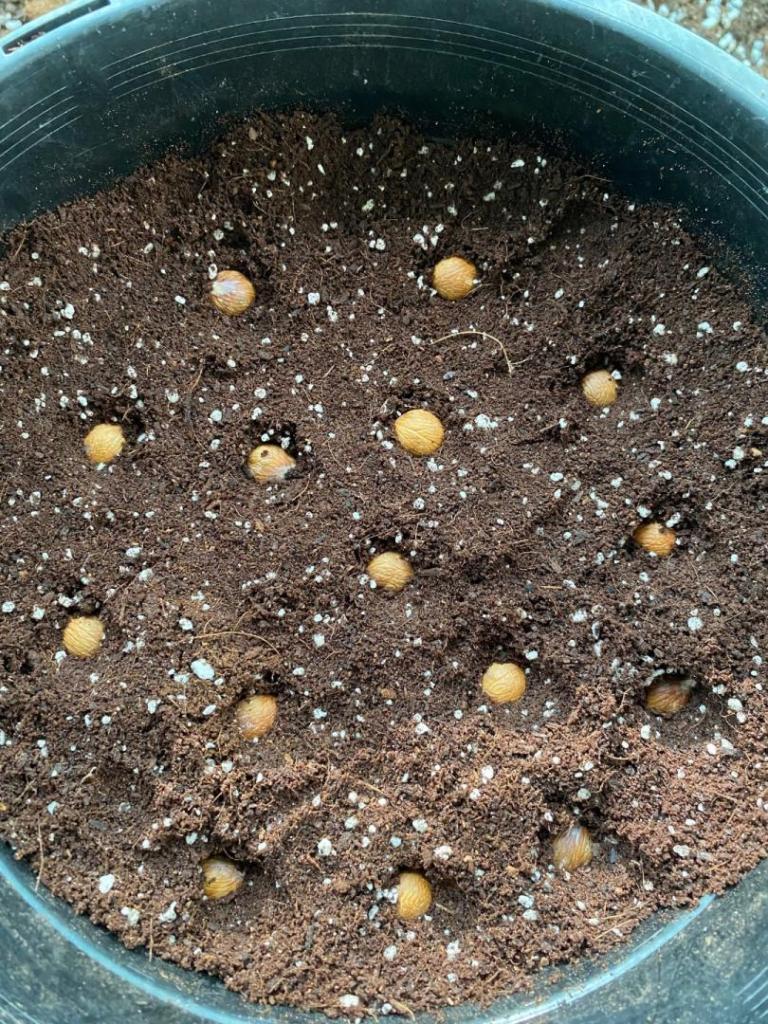



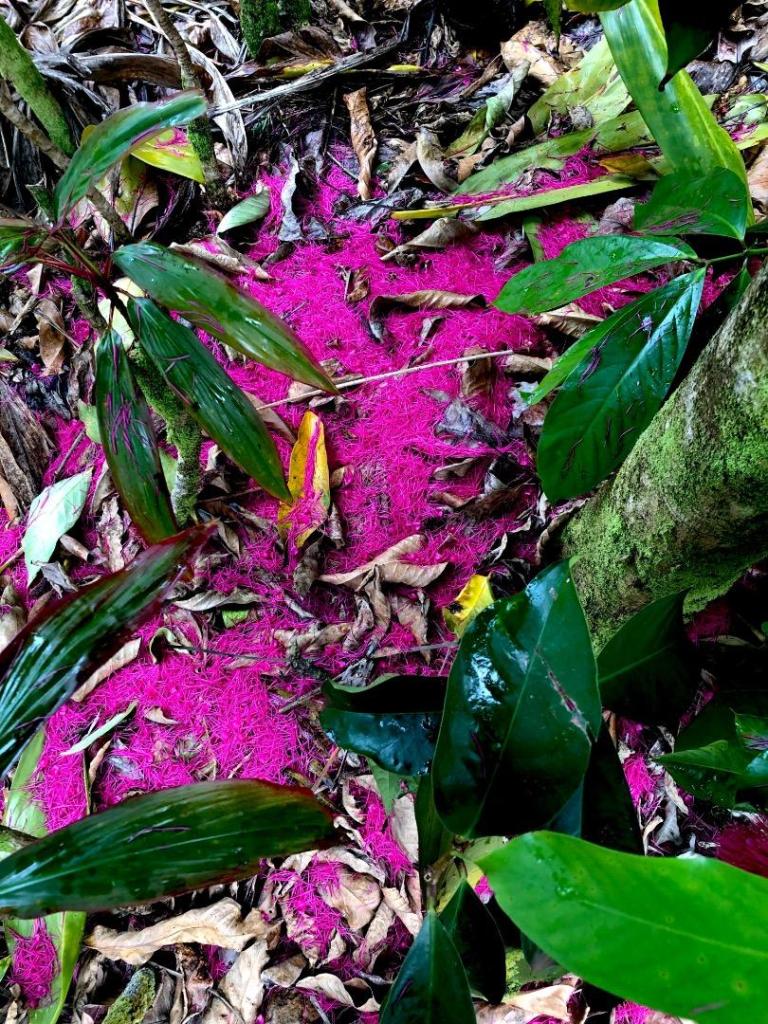
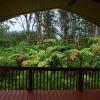

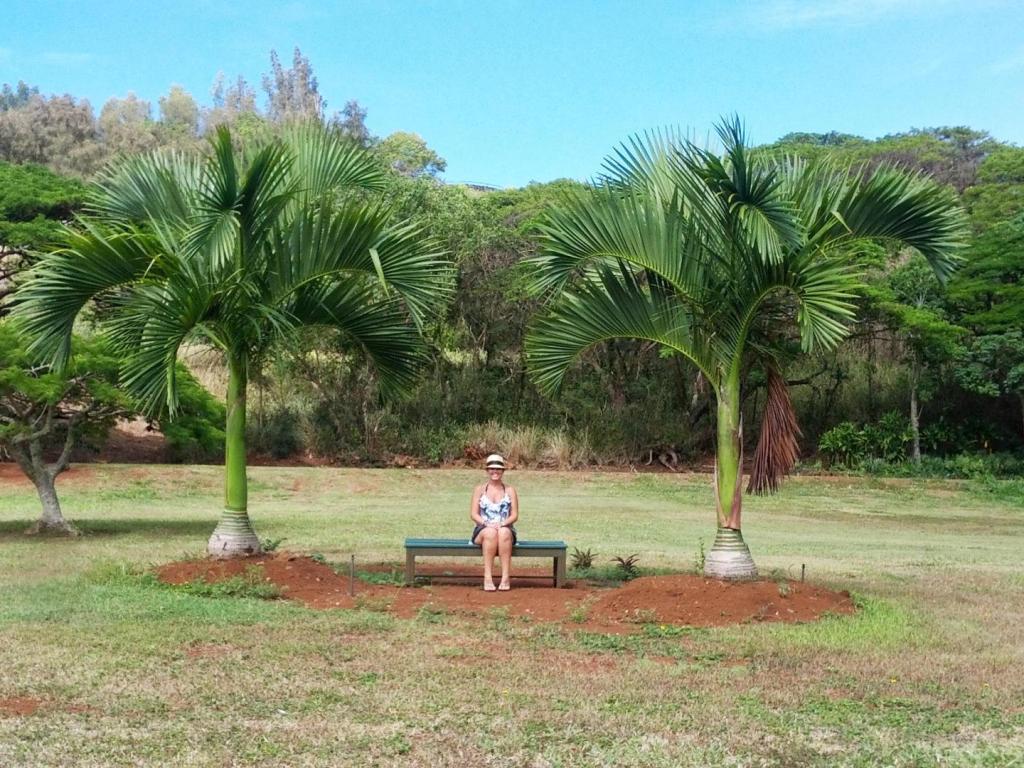












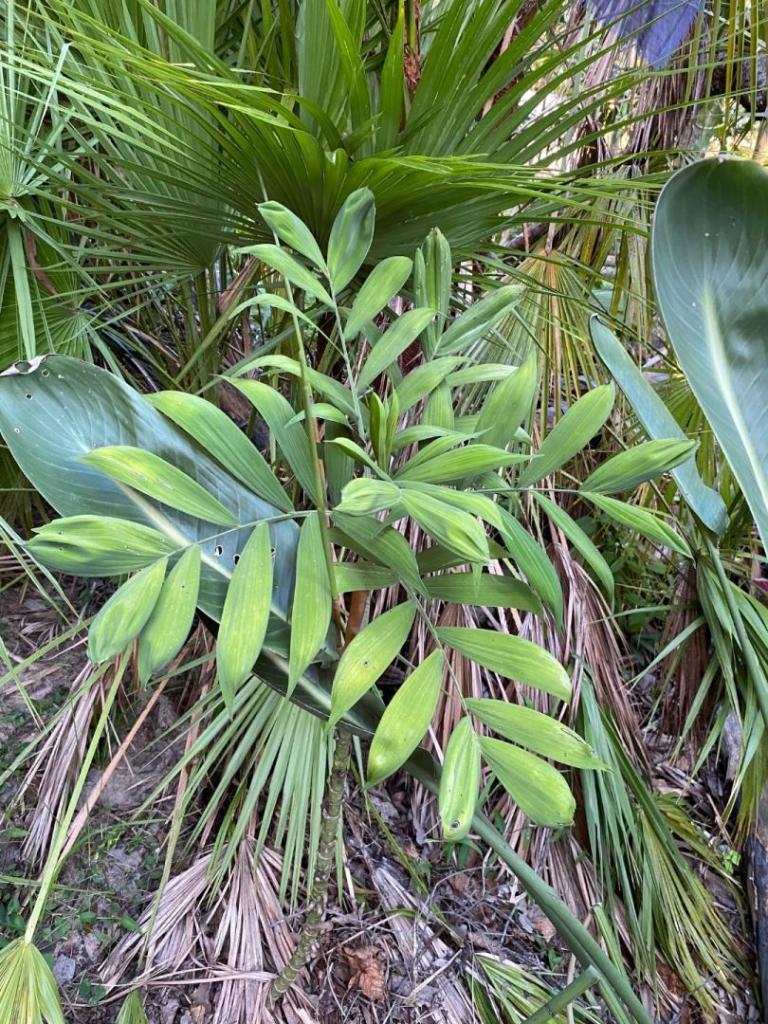

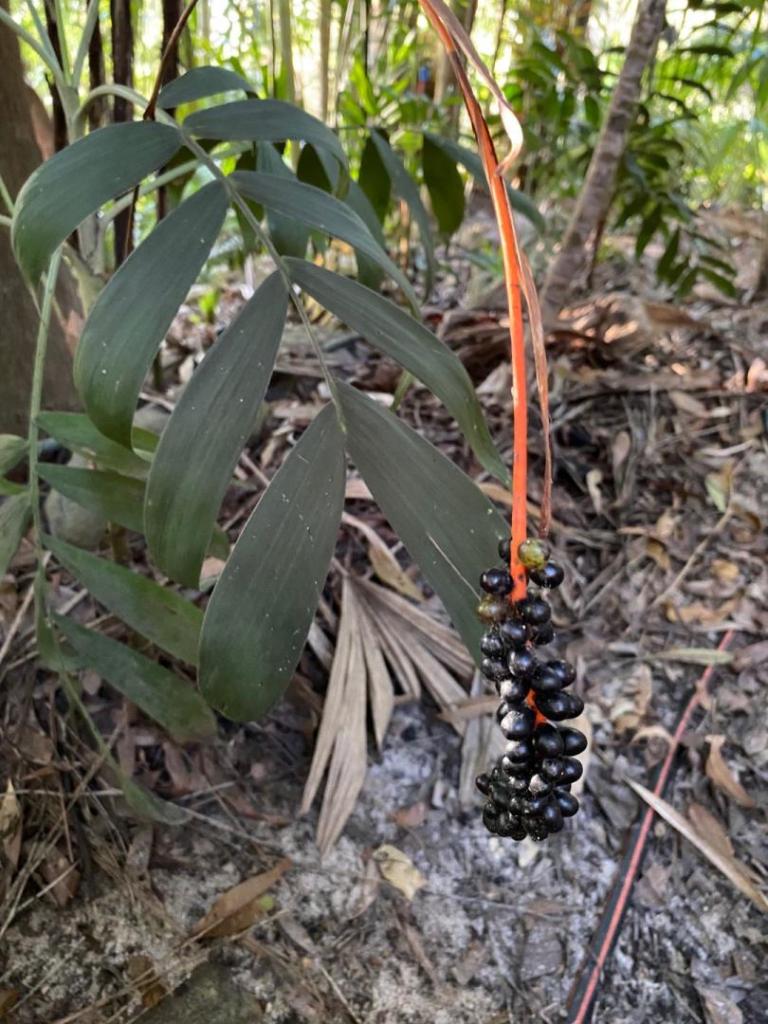


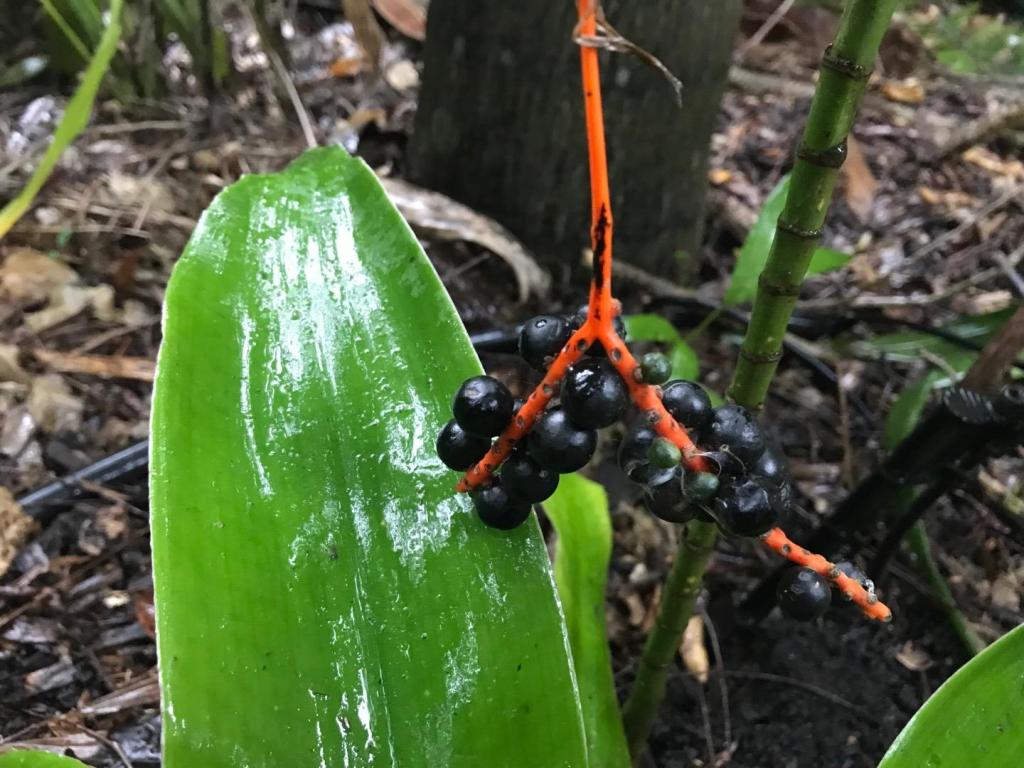
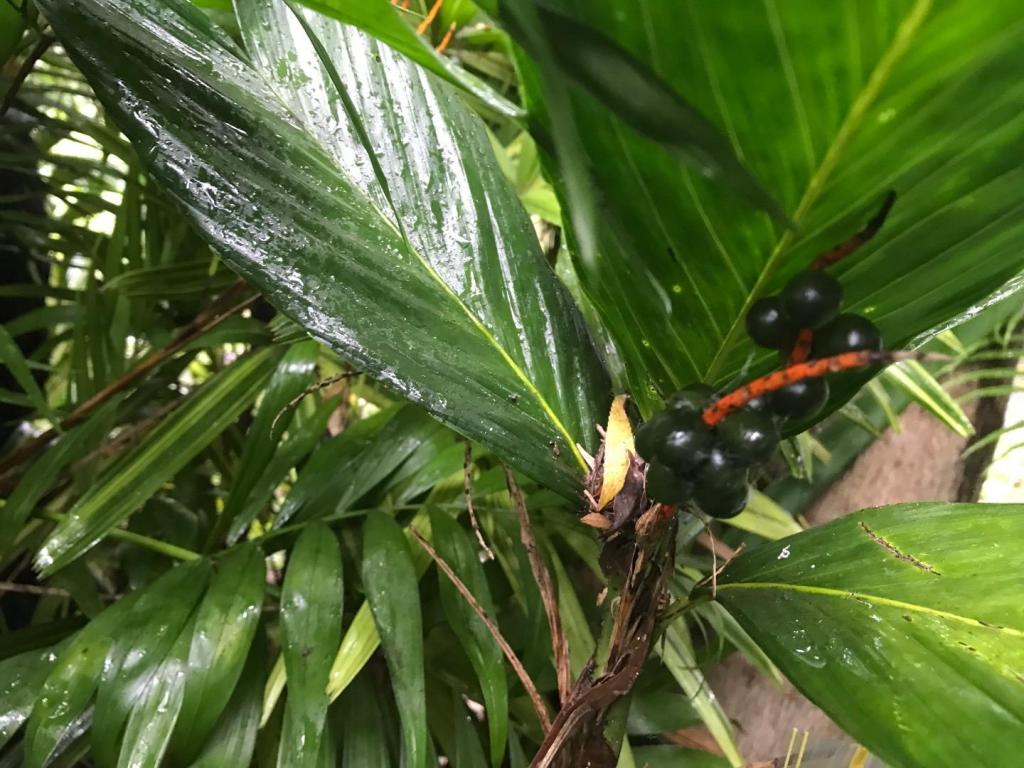
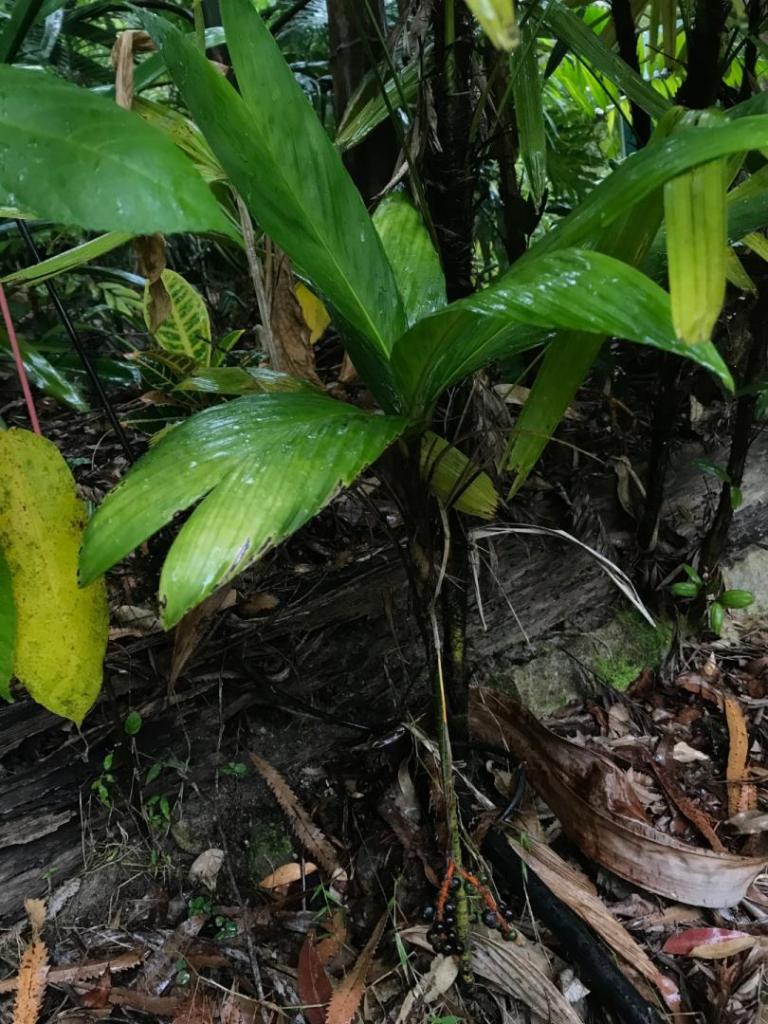




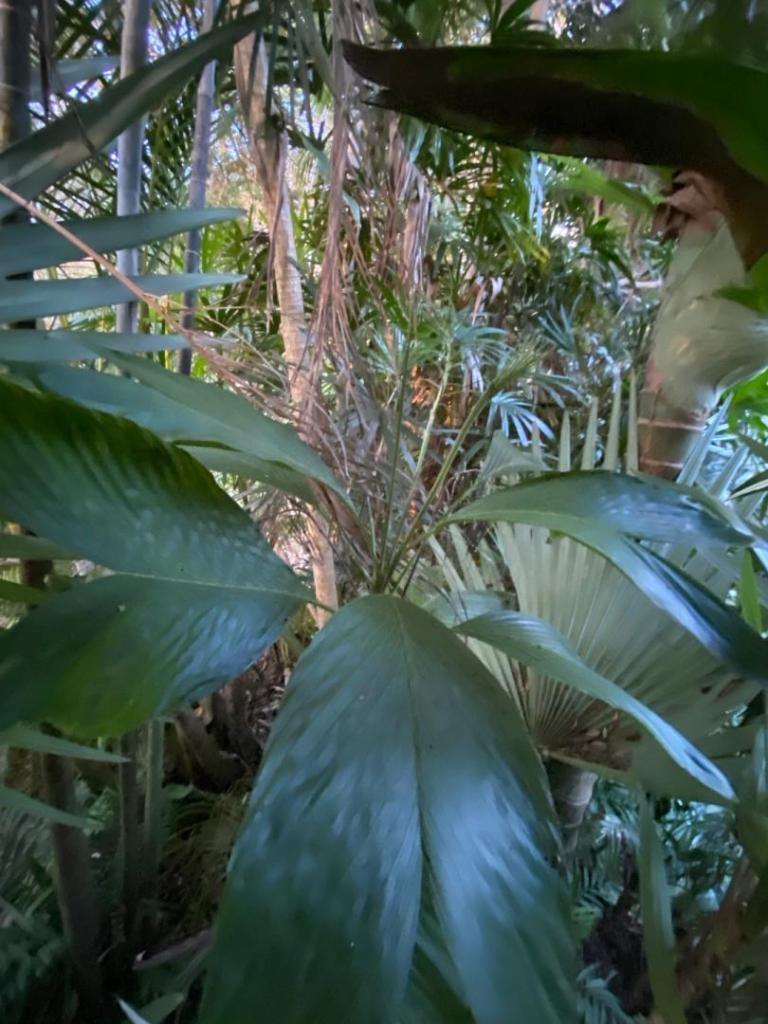










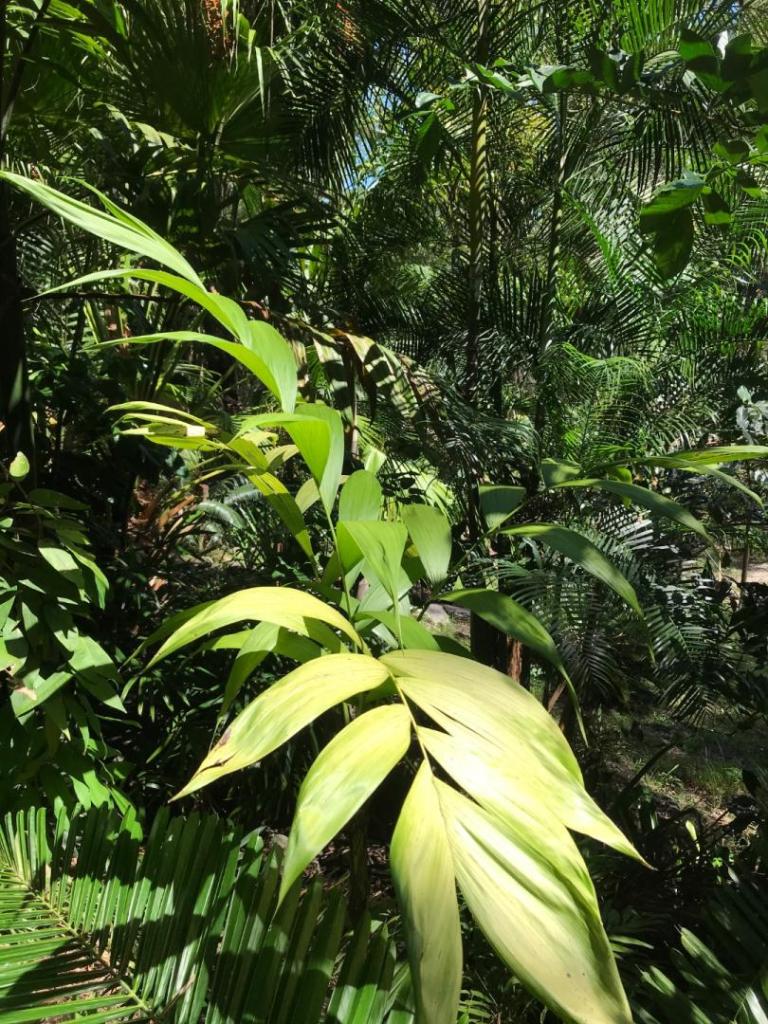











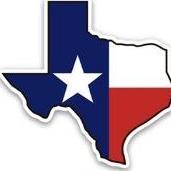


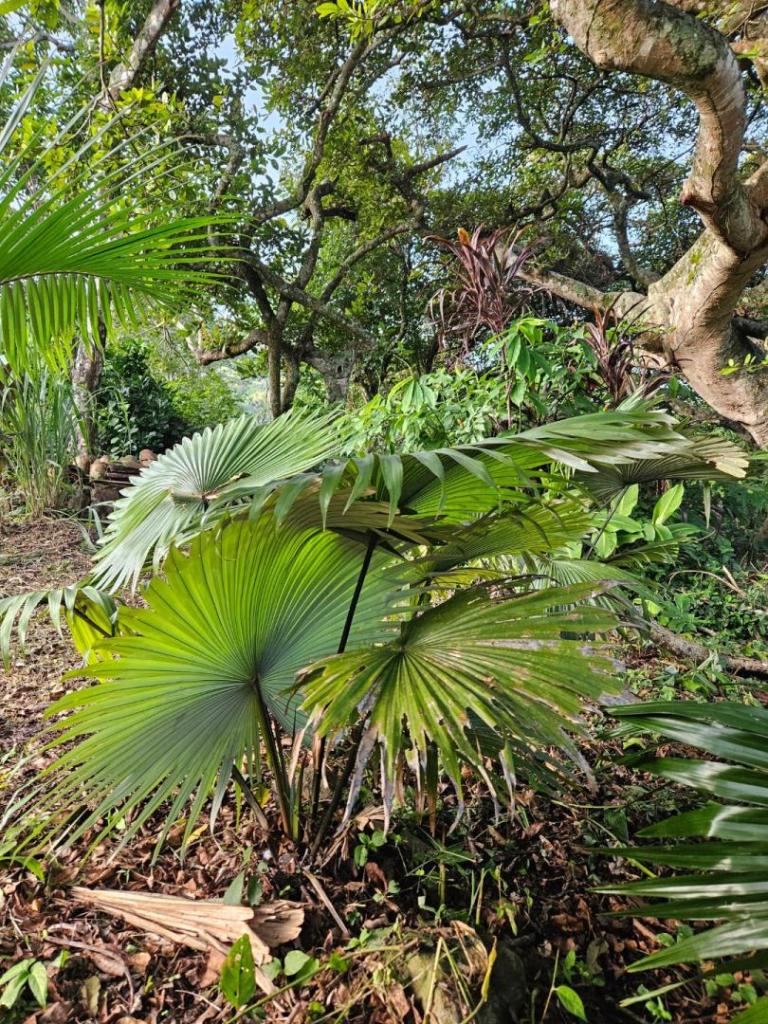




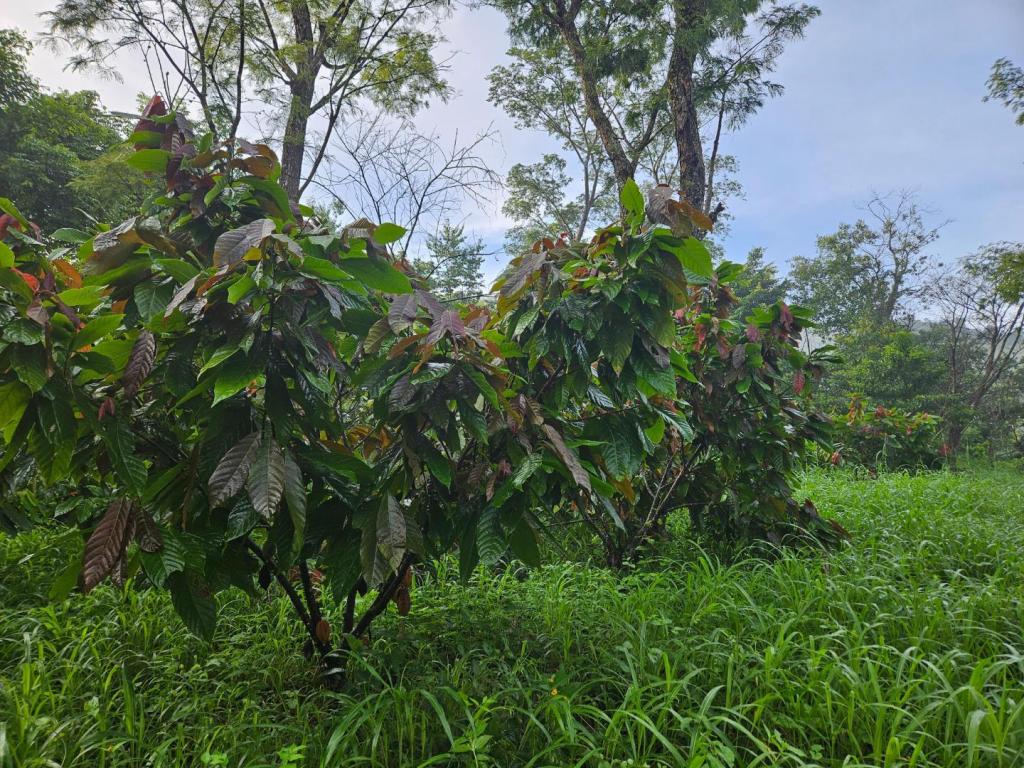




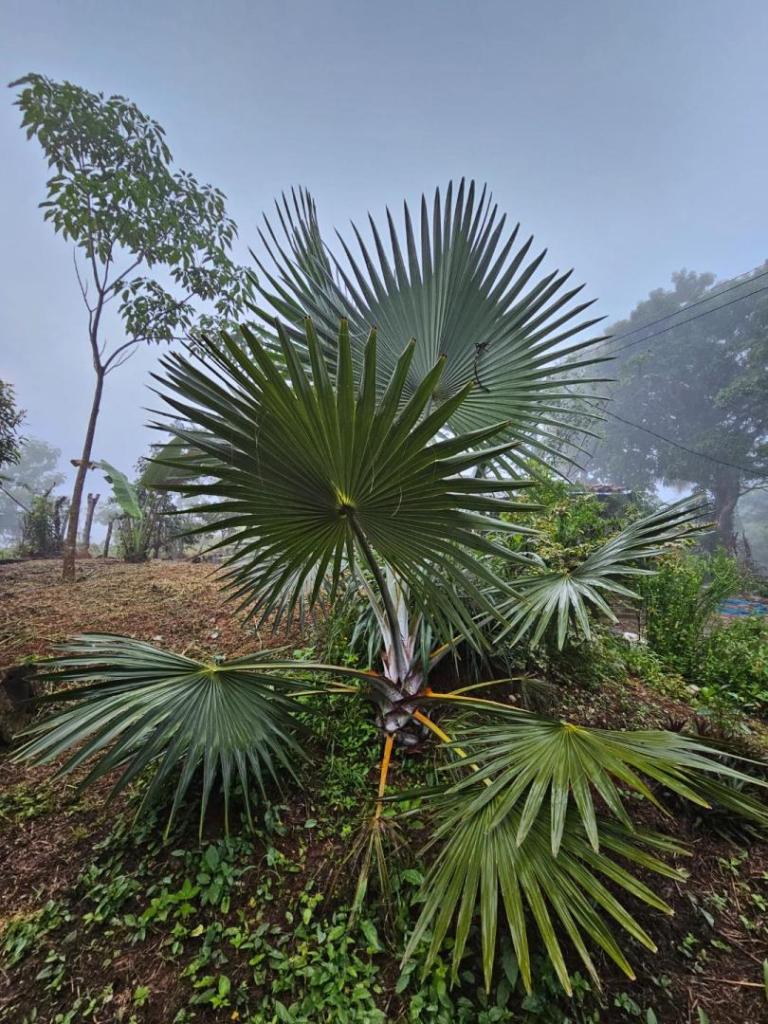











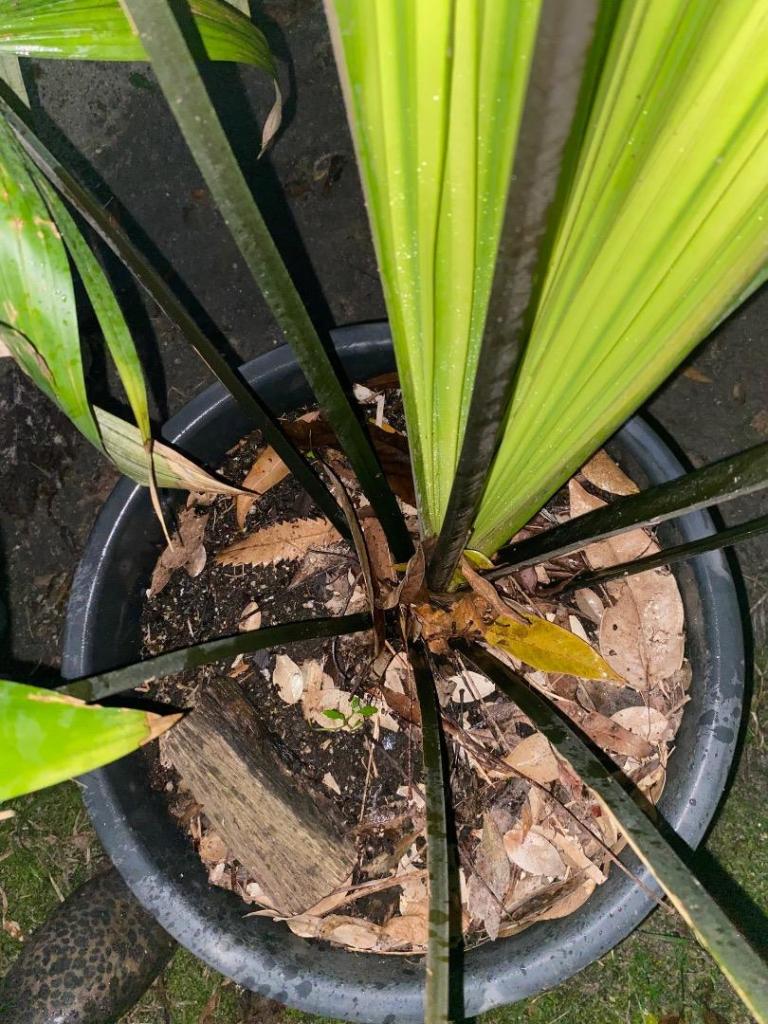
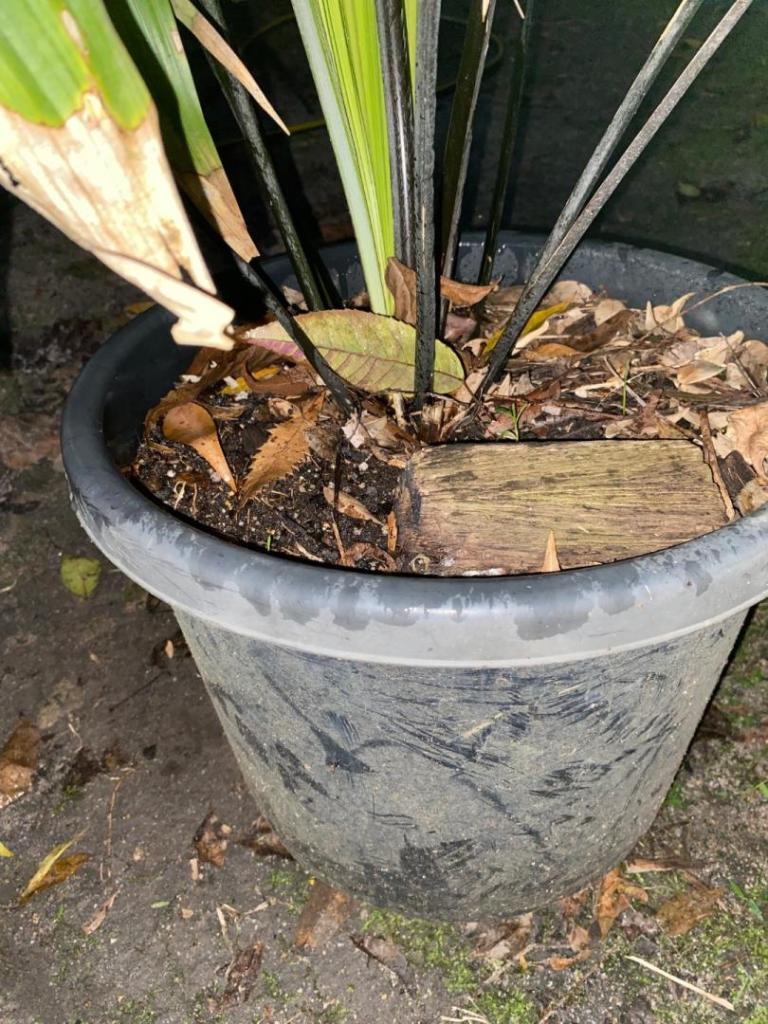
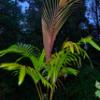



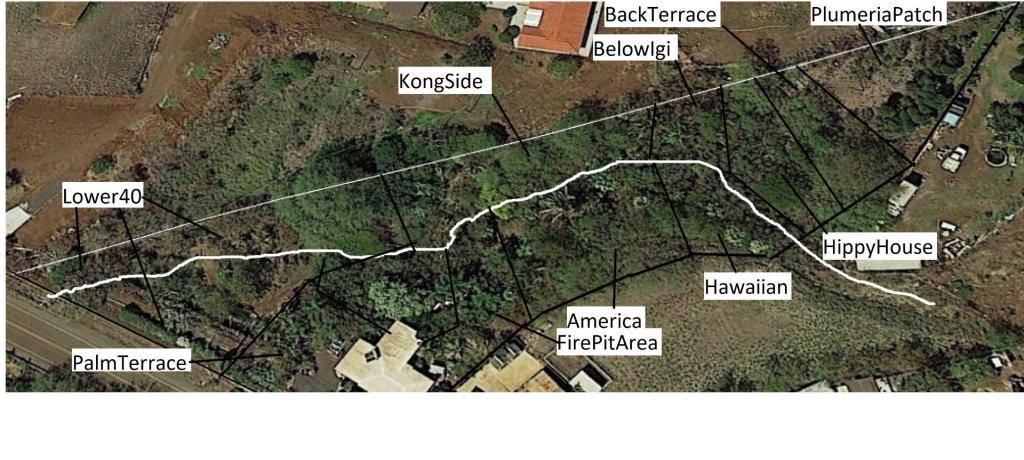
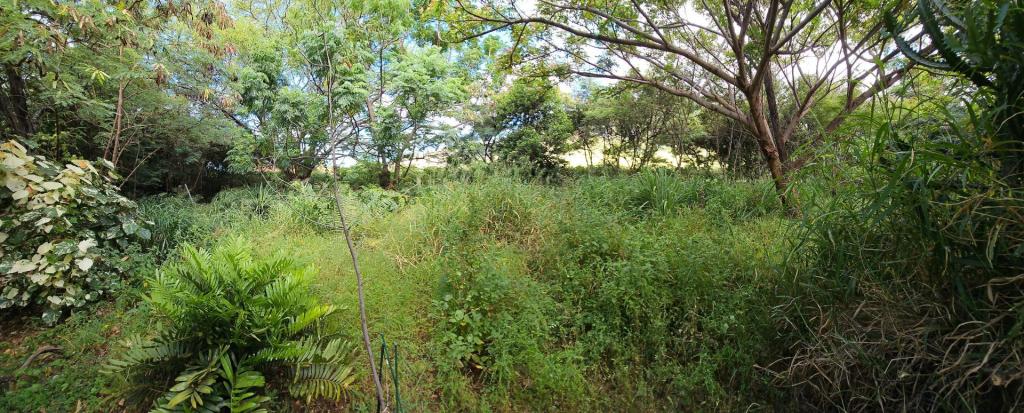


.thumb.jpg.f98e5066db1dec0358105c9c8eae8b39.jpg)

